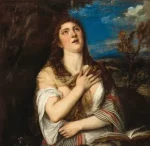
Dorotheum Auction House
Palais Dorotheum Dorotheergasse 17, Vienna, Austria 1010
+ 43 1-515 60-0
About Auction House
With the most successful auctions in its history, the Dorotheum attracts a great deal of attention. Record-breaking results in the leading art categories, world records and top prizes that the Dorotheum has been able to achieve for its customers are at the center of attention.
More than 300 years after its foundation by Emperor Joseph I, the Dorotheum in Vienna is by far the largest auction house in the German-speaking world, a leader in Central Europe and also one of the oldest and largest auction houses in the world. The international expansion contributes to the recent successes: branc...Read More
hes and representative offices can be found today in Munich, Dusseldorf, Milan, Rome, London, Prague and Brussels, where regular previews are held with the top lots of the auctions.Read Less
Auction Previews & News
3 Results-
 Auction Industry
Auction Industry -
 Auction Industry
Auction Industry -
 Auction Industry
Auction Industry -
 Auction Industry
Auction Industry
